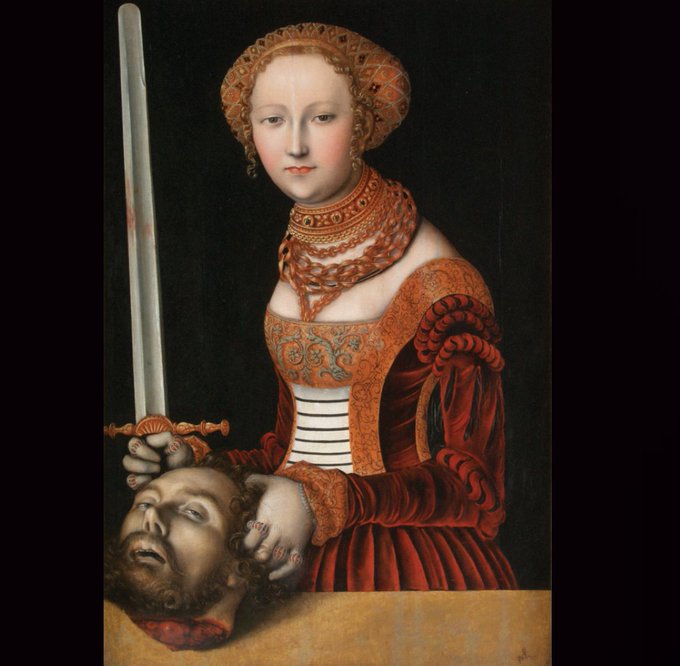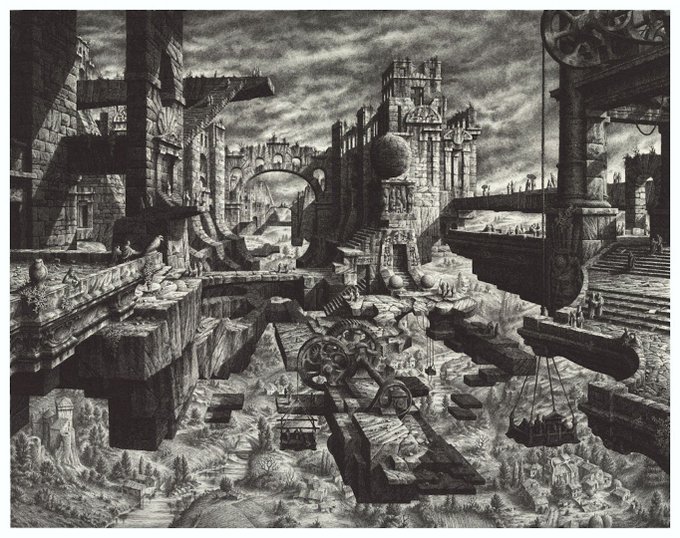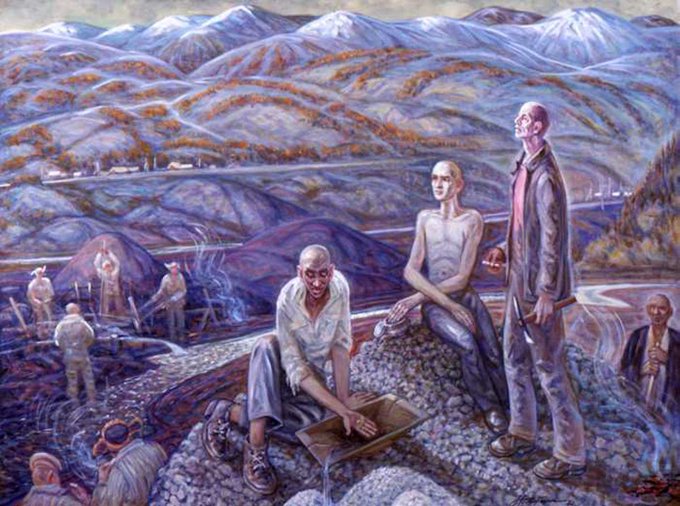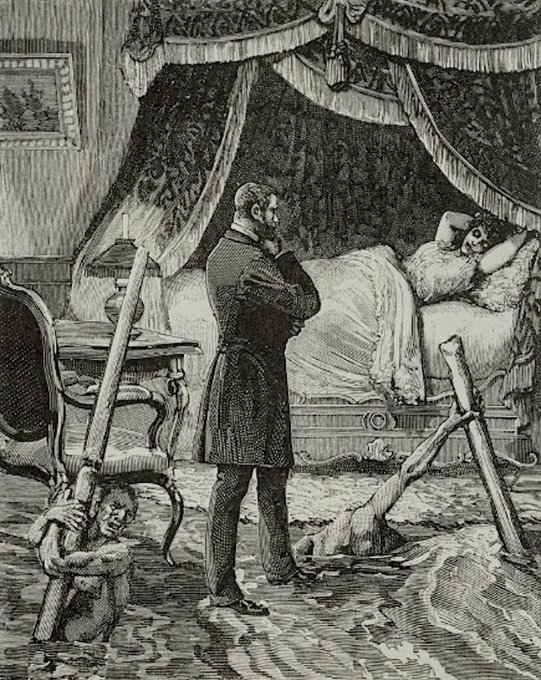The Receding Hairline look. During the Renaissance, high, curved foreheads were considered an important indicator of beauty & good breeding. As a result well-born European women plucked out hairs from their natural hairline all the way back to the crowns of their heads.
Losing the head for fashion. In the German renaissance it was the height of fashion for aristocratic Saxon ladies to have their portraits done by Lucas Cranach the Elder (1472 -1553). Dozens posed piously with sword and decapitated head as "Judith with the Head of Holofernes".
Victorian Psychedelic Gothic exists!
The stunning prints of contemporary artists Dan Hillier.
Almost-lost memories. Somewhere between the aesthetic of damaged videotape and the art of Gerhard Richter, lie the gorgeous, melancholy paintings of Andy Denzler. Meditations on memory.
The Washerwomen of the Night by Jean-Édouard Dargent (1824-1899) is based on a popular French folktale about female ghosts who spend eternity doing their laundry & murdering unfortunate souls in the night. It has parallels with Robert Burns poem-with-witches - 'Tam o' Shanter"
Invisible Cities. French illustrator Gérard Trignac’s stunning illustrations for Italo Calvino's classic book Invisible Cities. Here are his fantastical architectures for the cities Leonia, Octavia & Zenobia. He also creates his own imaginary cities, some of which fly.
A precocious student of Freud - Max Ernst (1891-1976) was obsessed with the “Interpretation of Dreams” which as published when Ernst was 8. He also concerned himself with abnormal psychology & the artistic achievement of mental patients, which were beginning to be investigated.
Gulag Artist. Nikolai Getman (1917-2004) was a prisoner in forced labor camps in Siberia (1946-1953). He survived by selling his sketching skills to the authorities for their propaganda . By Soviet records 1,700,000 died in Stalin's Gulags. Others sources claim 6-12 million.
The stunning other-worldy imagery of James Zapata's Moon & Crow series.
@jameszapata_
Escaping the deadly waters of the subconscious. Collages from "A Week of Kindness or the Seven Deadly Elements" 1934. Max Ernst's greatest artwork, this surrealist book has 182 images created by cutting up and re-organizing illustrations from Victorian encyclopedias and novels.








































